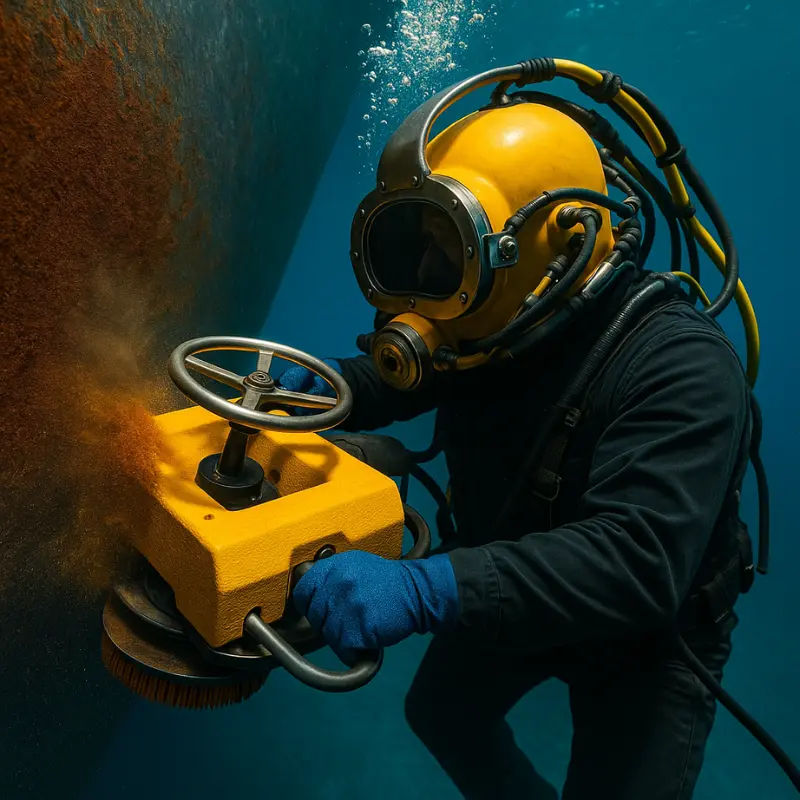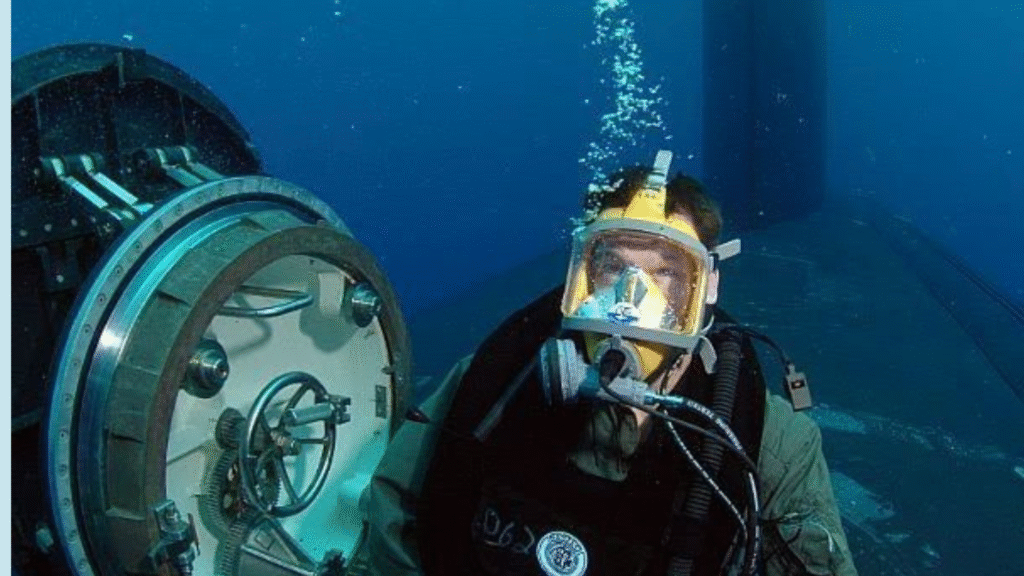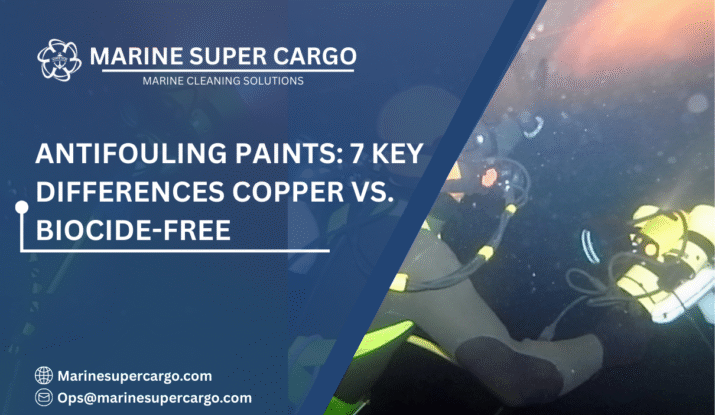Imagine painting a ship’s hull is like preparing armor for battle. Beneath the sea’s surface, the enemy isn’t rust or corrosion—it’s marine biofouling: barnacles, mussels, algae, and microbial slime. These invaders cling tenaciously to ships, slowing them down, increasing fuel use, and escalating maintenance costs. The shipping industry’s primary defense? Antifouling Paints.
For centuries, ship operators have turned to antifouling coatings to prevent this buildup. From toxic mixtures of arsenic centuries ago to modern copper- and silicon-based technologies, antifouling has always been the line between efficient voyages and costly, drag-filled journeys.
Today, the conversation is dominated by copper-based paints versus next-generation, biocide-free solutions. One represents a tried-and-tested protection model; the other offers eco-friendly innovation. But which is the better choice? In this article, we dive into the science, pros, cons, and future of Antifouling Paints.
Why Antifouling Matters More Than Ever
With global trade demands rising, ship operators face three powerful pressures: cost, compliance, and climate.
- Fuel Costs: The International Maritime Organization (IMO) estimates heavy fouling increases fuel consumption by up to 40%.
- Environmental Rules: MARPOL Annex VI and IMO Biofouling Management Guidelines require reducing emissions and invasive species transfer.
- Sustainability Push: Port authorities like the International Association of Ports and Harbors (IAPH) emphasize eco-safe antifouling strategies.
The type of Antifouling Paints ships use impacts not just efficiency, but compliance with international rules and public perception.

What are Antifouling Paints?
Simply put, Antifouling Paints are specialized marine coatings designed to prevent organisms from adhering to a ship’s hull. They act as a shield between steel and seawater. Two primary types dominate today’s discussion:
- Copper-Based Antifouling Paints – These release copper ions or additional toxic biocides that kill or deter biofouling organisms.
- Biocide-Free Antifouling Paints – These rely on physical properties like slick nano-surfaces, silicone coatings, or biomimetic (nature-inspired) technology to prevent attachment without toxicity.
Think of copper paints as using “poisoned armor,” whereas biocide-free systems are more like “smooth, slippery armor” where enemies cannot latch on. Learn more.
Copper-Based Antifouling Paints
How They Work
Copper-based paints release ions into seawater. The copper acts as a toxin, preventing barnacles, algae, and other organisms from successfully attaching. Many formulations also include booster biocides to intensify the toxic effect. Read more.
Advantages
- Highly effective against a wide range of biofoulers.
- Proven track record used globally for decades.
- Comparatively cheaper to apply initially than advanced systems.
- Readily available and compatible with standard dry-dock procedures.
Drawbacks
- Environmental impact: Copper accumulation harms marine ecosystems.
- Regulatory restrictions: Certain regions (e.g., the EU, California) are phasing out copper paints.
- Coating degradation: Constant ion release can reduce durability.
- Invasive species loophole: While copper kills local organisms, residues can still travel and survive in ballast tanks or bilges.
In short, copper remains effective but increasingly controversial.
⚓ Get Your Ship Cargo Ready with Marine Super Cargo 🚢
— Marine Super Cargo (@Marinsupercargo) September 12, 2025
Your next voyage begins with a vessel that’s clean, compliant, and cargo-ready. At Marine Super Cargo, we deliver top-quality marine services: pic.twitter.com/3627aoKAZo
Biocide-Free Antifouling Paints
How They Work
Instead of killing organisms, these coatings simply make the hull surface uninhabitable. Popular types include:
- Silicone-based coatings: Create ultra-smooth, non-stick hulls. Biofouling can’t hold on when water flows past.
- Nanotechnology coatings: Alter hull surfaces at microscopic levels for hydrophobic (water-repelling) effects.
- Biomimetic designs: Inspired by shark skin, micro-patterns confuse or deter organisms from settling.
Advantages
- Marine-safe: No release of toxic substances, aligning with eco-regulations.
- Compliance-friendly: Future-proof against bans on biocides.
- Durable: Some coated hulls remain effective for up to 10 years with proper maintenance.
- Supports ESG goals: Positive brand reputation in sustainable shipping.
Drawbacks
- High initial cost: Application costs can be 2–3 times higher than copper paints.
- Performance variability: Effectiveness depends on vessel speed and water conditions. Stationary or slow-moving vessels may still experience fouling.
- Special handling needed: Coating application requires skilled teams and specialized infrastructure.
Essentially, biocide-free systems opt for prevention over poison—aligning with green goals but requiring investment.
Antifouling Paints: Copper vs. Biocide-Free Comparison
| Factor | Copper-Based Paints | Biocide-Free Paints |
|---|---|---|
| Mechanism | Toxic ion release to kill organisms | Smooth/engineered surfaces prevent adhesion |
| Effectiveness | Highly effective, proven historically | Effective if vessel remains active |
| Cost | Lower initial cost | Higher upfront, lower long-term maintenance |
| Environmental Impact | Harmful to marine ecology | Eco-friendly, toxin-free |
| Regulatory Compliance | Increasingly restricted by IMO/IAPH zones | Fully compliant and future-proof |
| Lifespan | 2–5 years | 5–10 years (with proper care) |
The debate reflects a broader industry shift—from relying on chemical deterrents to physical resistance in hull coatings.
Antifouling Paints in Regulatory Context
- The IMO Biofouling Guidelines (MEPC.207(62)) call for eco-friendly antifouling strategies.
- MARPOL Annex VI indirectly places pressure by requiring emission reductions.
- Authorities like IMCA emphasize safety benefits when eco coatings reduce diver reliance.
- IAPH supports antifouling strategies that prevent invasive species spread.
Adopting biocide-free coatings today ensures smoother regulatory sailing tomorrow.
Cost and ROI Considerations
A cost analysis reveals why operators increasingly consider biocide-free options:
- Copper paints: Cheaper upfront but require more frequent reapplication (every 2–3 years). Factoring in downtime, the lifecycle cost can rise quickly.
- Biocide-free paints: Higher upfront cost but longer coating life (5–10 years) with fewer reapplications. Combined with consistent fuel savings, the ROI balances out.
For ship managers, the calculation is less about cost now and more about savings and compliance later.
Industry Use Cases
- Copper paints: Still widely used on regional short-haul vessels and smaller fleets where upfront cost constraints dominate.
- Biocide-free paints: Increasingly adopted by large container lines, naval fleets, and tankers prioritizing ESG and long-term savings.
For example, some major carriers have reported significant CO₂ reduction metrics after shifting toward biocide-free coatings, aligning with investor sustainability mandates.

The Future of Antifouling Paints
The horizon points toward hybrid solutions:
- Self-healing coatings: Nano-structured systems that repair wear automatically.
- Smart antifouling: Surfaces that adapt properties based on environmental sensors.
- Combination models: Coatings that blend non-toxic surfaces with robotic hull cleaning systems like HullWiper or Groom.
- Policy-driven evolution: By 2030, copper paints may be phased out in most ports worldwide.
The trend is undeniable—shipping is moving from compliance-driven antifouling to innovation-driven sustainability.
Conclusion
Antifouling Paints are central to the fight against biofouling. While copper-based coatings remain effective, they carry growing environmental and regulatory baggage. Biocide-free coatings, though costlier to apply, are future-ready solutions offering compliance, sustainability, and long-term ROI.
3 Key Takeaways:
- Copper paints are effective but face stricter environmental restrictions.
- Biocide-free paints cost more initially but offer longer-term savings and compliance.
- The future lies in eco-innovation, aligning with sustainability and IMO goals.
To explore innovative antifouling strategies and future-proof your fleet, visit CleanShip.co for expert resources.
FAQ:
Q1. What are Antifouling Paints used for?
They are specialized ship coatings designed to prevent marine organisms like barnacles, algae, and mussels from attaching to hulls, reducing drag and fuel costs.
Q2. Why are copper-based Antifouling Paints being phased out?
Because of their toxic impact on marine life, there are regulatory bans in regions aiming for zero-toxin antifouling solutions.
Q3. Are biocide-free Antifouling Paints as effective?
Yes, especially for active vessels. They repel fouling physically rather than poisoning it, and are more eco-friendly.
Q4. Which is cheaper: copper-based or biocide-free Antifouling Paints?
Copper is cheaper upfront, but biocide-free solutions last longer, reduce fuel costs, and align with future regulations, balancing ROI over time.
Q5. What does the future of Antifouling Paints look like?
Expect hybrid, self-healing, and nanotechnology-driven systems integrated with robotic hull cleaning, ensuring compliance with IMO and MARPOL goals.


